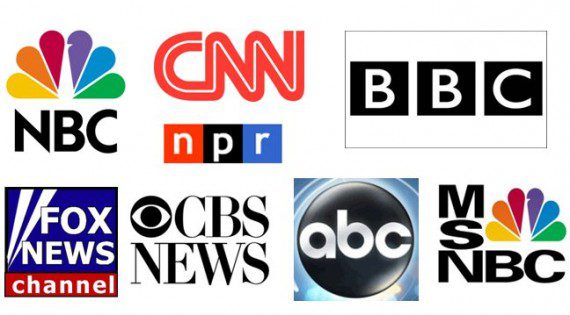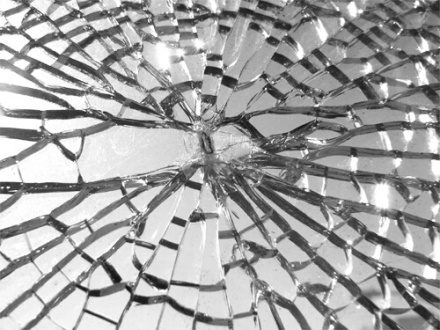Shortly after the US election, BuzzFeed Canada media editor Craig Silverman's coverage of fake news sites that were widely shared and engaged with on Facebook during the election began an outbreak of the buzzword being reported ad infinitum by mainstream media around the globe. Pundits, pollsters and journalists claimed this supposedly new phenomenon of fake news had a major impact on the American zeitgeist, and potentiallygasp!on the election's outcome. The peddlers of fake news were convenient scapegoats for why the mainstream media's predictions were so spectacularly wrong; too many were duped by these faux news scoundrels into voting for Trump.
However, when scrutinized, fake news sites' influence was minimal and the overblown moral panic over it was unjustified. On the contrary, far more insidious than phoney fringe news sites is the fake news knowingly or unwittingly reported as truth by the mainstream media itself. The public is much more susceptible to being duped by this type of fake news. News outlets tend to echo each other's false narratives, resulting in ubiquitous reporting of fiction as fact, which then leads to a major swaying of public opinion, sometimes with violent consequences.
After the election, the press presumed there was a sudden spike in hate crimes due to Trump normalizing racial hatred. But upon further inspection, many of these supposed hate crimes turned out to be threadbare yarns. A Reason article revealed that many of the supposed acts of hateful vandalism proliferating after Nov. 8 were perpetrated by left-wing activists or juvenile delinquents carrying out false flags or pranks. Just one of countless examples was the supposed outbreak of hate crimes in Ottawa that turned out to be a lone teenager (perhaps inspired by media reports of fake hate crimes) spray-painting swastikas and racial slurs on mosques, churches and synagogues. Of course these acts of vandalism were repulsive, but they were a far cry from a gang of adult white nationalists crawling out of the woodwork, emboldened by a Trump presidency as the media wrongly suggested.
Another story widely reported by the mainstream media was the accosting of a Muslim woman by two white men wearing Trump hats. This turned out to have never happened, yet news outlets ran with it. This was just one of many stories that circulated on social mediawidely and unquestioningly reported by the mainstream mediaabout Muslims, blacks and gays being attacked by Trump supporters, which were debunked as hoaxes. Journalists were so convinced Trump's victory was the catalyst for unleashing a wave of hate crimes across America that they began actively seeking out hate crimes to feed their confirmation bias, which only further encouraged hoaxers and stoked anger.
The above is not meant to minimize the importance of real and despicable hate crimes, but rather to point out that the media giving voice to bunk stories sparks fires. Some of the attacks on Trump supporters and minorities were brought about by the mainstream media's witless reporting on a spike in hate crimes. It's a self-fulfilling prophecy when the media energetically reports a phoney spate of attacks and hatred levelled against minority groups that inevitably some mercurial individuals become enraged enough to retaliate to the ruses. That is what happened when a hostile group dragged a Trump supporter from his car and beat him. That is what happened when four impressionable teens, citing their hatred of Trump supporters, kidnapped and tortured a young man with special needs. And these were just two of the most extreme examples of people being targeted for verbal and physical assault for being Trump supporters. As much as the mainstream media blamed fake news for a gunman holding up a pizzeria, the real press is far more effective in stoking violence and hatred within the public with its own fake news.
But reporting of ruses as real events, which smeared Trump supporters as violent racists, didn't just begin after the election. Controversial right wing activist and mudraker James O'Keefedismissed by many journalists because of his organization's funding from the Trump Foundation and former arresthad undercover reporters infiltrate and catch Democratic National Committee-contracted political operatives admitting to plotting protests and inciting violence at Trump rallies. Even the New York Times reported on this bombshell. The revelation revealed that violence at Trump rallies, like the riot in Chicago, were (at least partly) funded and orchestrated by Democrat groups. The mainstream media for over a year had been reporting these protests as organic and that Trump supporters seemed prone to violence. But now it appears to be manufactured by political operatives. And now in another video released by O'Keefe the Monday before inauguration, it appears organizations were planning to use illegal and violent tactics to disrupt celebrations.
When the media makes broad generalizations about Trump supporters being by-and-large racist and violent by reporting fake news about them as fact, other people, misinformed and misled, become hateful and resentful of their fellow citizens, leading to more confrontation.
If the press wants to combat this new "post-truth" world swirling in rumours, hoaxes and innuendo, where Trump lies routinely with his "alternative facts", the mainstream media must resist the increasing urge in a 24/7 hyper-ephemeral news cycle to report first, ask questions later. Reporting false stories that Trump supporters are racist and violent, committing hate crimes across America, only further erodes the press's record low credibility. The media must do a better job of discerning fact from fiction. Otherwise Trump's crack"You're fake news!"will stick.
Written by Graeme C. Gordon








